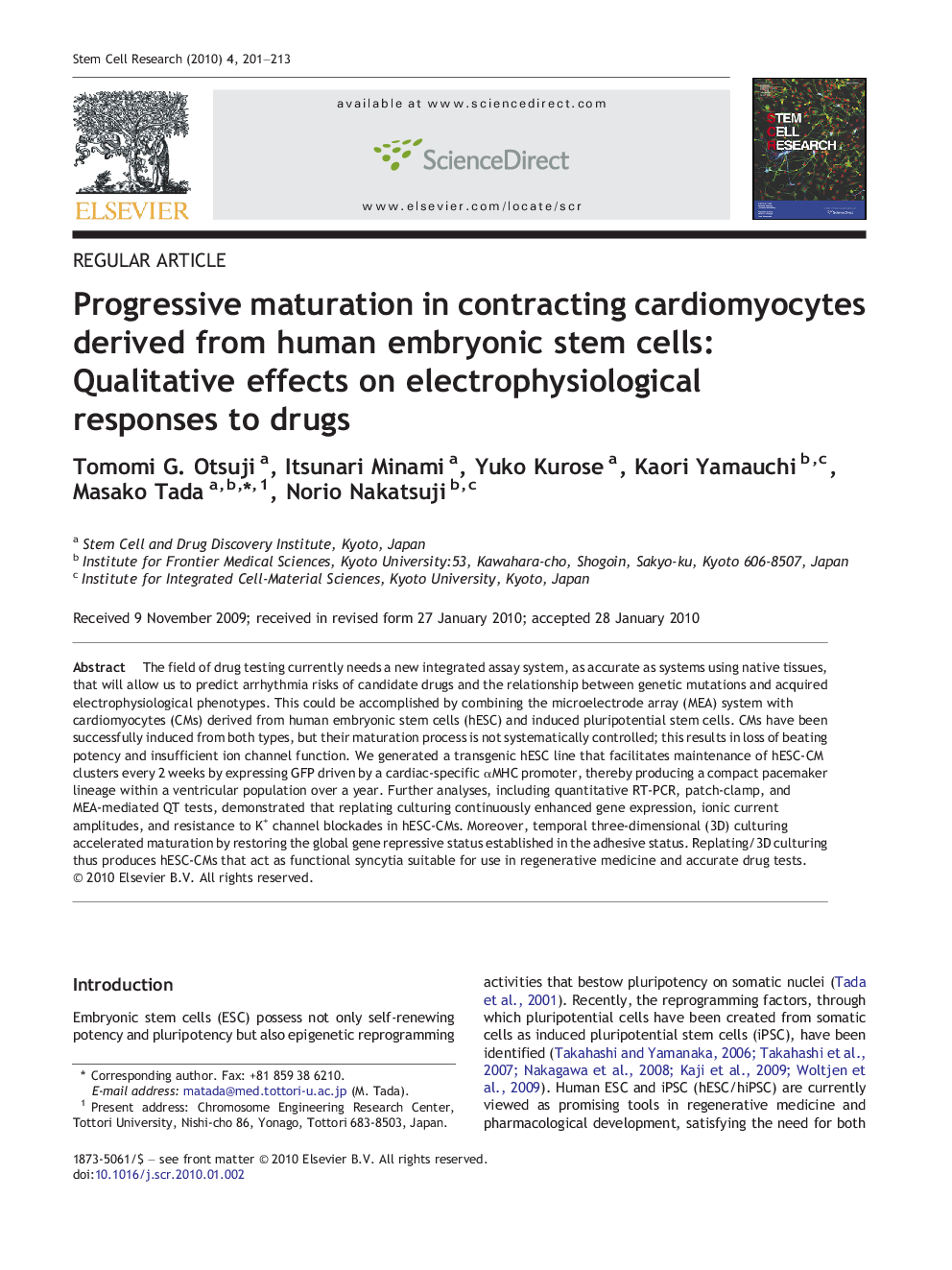| Article ID | Journal | Published Year | Pages | File Type |
|---|---|---|---|---|
| 10891379 | Stem Cell Research | 2010 | 13 Pages |
Abstract
The field of drug testing currently needs a new integrated assay system, as accurate as systems using native tissues, that will allow us to predict arrhythmia risks of candidate drugs and the relationship between genetic mutations and acquired electrophysiological phenotypes. This could be accomplished by combining the microelectrode array (MEA) system with cardiomyocytes (CMs) derived from human embryonic stem cells (hESC) and induced pluripotential stem cells. CMs have been successfully induced from both types, but their maturation process is not systematically controlled; this results in loss of beating potency and insufficient ion channel function. We generated a transgenic hESC line that facilitates maintenance of hESC-CM clusters every 2 weeks by expressing GFP driven by a cardiac-specific αMHC promoter, thereby producing a compact pacemaker lineage within a ventricular population over a year. Further analyses, including quantitative RT-PCR, patch-clamp, and MEA-mediated QT tests, demonstrated that replating culturing continuously enhanced gene expression, ionic current amplitudes, and resistance to K+ channel blockades in hESC-CMs. Moreover, temporal three-dimensional (3D) culturing accelerated maturation by restoring the global gene repressive status established in the adhesive status. Replating/3D culturing thus produces hESC-CMs that act as functional syncytia suitable for use in regenerative medicine and accurate drug tests.
Related Topics
Life Sciences
Biochemistry, Genetics and Molecular Biology
Biotechnology
Authors
Tomomi G. Otsuji, Itsunari Minami, Yuko Kurose, Kaori Yamauchi, Masako Tada, Norio Nakatsuji,
